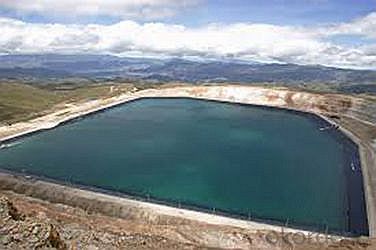- Understanding the Role of Geomembrane Liners in Waste Management
- Innovations in Geomembrane Liners for Water Management
- Geomembrane Liners: A Comprehensive Guide
- The Future of Geomembrane Liners in Civil Engineering
- Geomembrane Liners: Enhancing Landfill Stability
Manager:
WhatsApp:+86 177 0135 2670
Tel:+86 177 0135 2670
Email:marketing@okorder.com
Address:3rd Floor, No.2 Building, No.1 Sanlihe Road
The Role of Geomembrane Liners in the Construction of Industrial Chemical Reservoirs
Geomembrane liners, a term that might sound alien to some, are actually a crucial component in the construction of industrial chemical reservoirs. These liners are essentially a type of barrier material that are used to prevent leakage of chemicals and other hazardous substances into the surrounding environment. They are designed to be durable, flexible, and resistant to a wide range of chemicals, making them an ideal choice for reservoirs that store a variety of substances.

The Importance of Geomembrane Liners
===============================
Before we dive into the specifics, it's important to understand why geomembrane liners are so important. Industrial chemical reservoirs are often used to store a variety of hazardous substances, from acids and alkalis to solvents and heavy metals. These substances can have a devastating impact on the environment if they were to leak out of the reservoir. That's where geomembrane liners come in. They act as a barrier, preventing these substances from escaping and causing harm.
Design and Materials
——————-
Geomembrane liners are made from a variety of materials, including high-density polyethylene (HDPE), polyvinyl chloride (PVC), and ethylene propylene diene monomer (EPDM). These materials are chosen for their durability and resistance to a wide range of chemicals. The liners are also designed to be flexible, allowing them to conform to the shape of the reservoir and prevent any gaps or leaks.
Installation Process
——————-
The installation process for geomembrane liners is a meticulous one. It begins with a thorough inspection of the reservoir site to ensure that the ground is level and free of any debris or rocks that could puncture the liner. Once the site is prepared, the liner is carefully unrolled and laid out over the surface. It's then secured in place using a combination of anchors and seams, which are sealed using specialized techniques to ensure a watertight seal.
Maintenance and Repair
———————
Proper maintenance and repair of geomembrane liners is essential to ensure their longevity and effectiveness. Regular inspections should be conducted to check for any signs of wear or damage, and repairs should be made promptly to prevent any potential leaks. In some cases, it may be necessary to replace the entire liner if it becomes too damaged to repair.
Challenges and Solutions
———————-
Despite their many benefits, there are also some challenges associated with the use of geomembrane liners. One of the main challenges is the potential for leaks, which can occur if the liner is not properly installed or maintained. To address this, it's important to work with experienced professionals who have a thorough understanding of the installation and maintenance process. Additionally, advances in materials and installation techniques are constantly being made, which can help to minimize the risk of leaks and improve the overall performance of the liner.
The Future of Geomembrane Liners
——————————-
As the world becomes more environmentally conscious, the demand for effective and sustainable solutions for the storage of hazardous substances is only going to increase. Geomembrane liners are well-positioned to meet this demand, thanks to their durability, flexibility, and resistance to a wide range of chemicals. With ongoing research and development, we can expect to see even more advanced materials and techniques being used in the construction of industrial chemical reservoirs in the future.
In conclusion, geomembrane liners play a vital role in the construction of industrial chemical reservoirs. They provide a reliable barrier that helps to protect the environment from the potentially harmful effects of stored chemicals. With proper installation, maintenance, and ongoing innovation, these liners can continue to be an essential tool in the safe storage of hazardous substances for years to come.
- Previous:Geomembrane Liners: A Solution for the Containment of Industrial Chemical Runoff
- Next:Geomembrane Liners: A Barrier Against Industrial Chemical Leakage
-
2024-12-05Geomembrane Liners: A Comprehensive Guide






